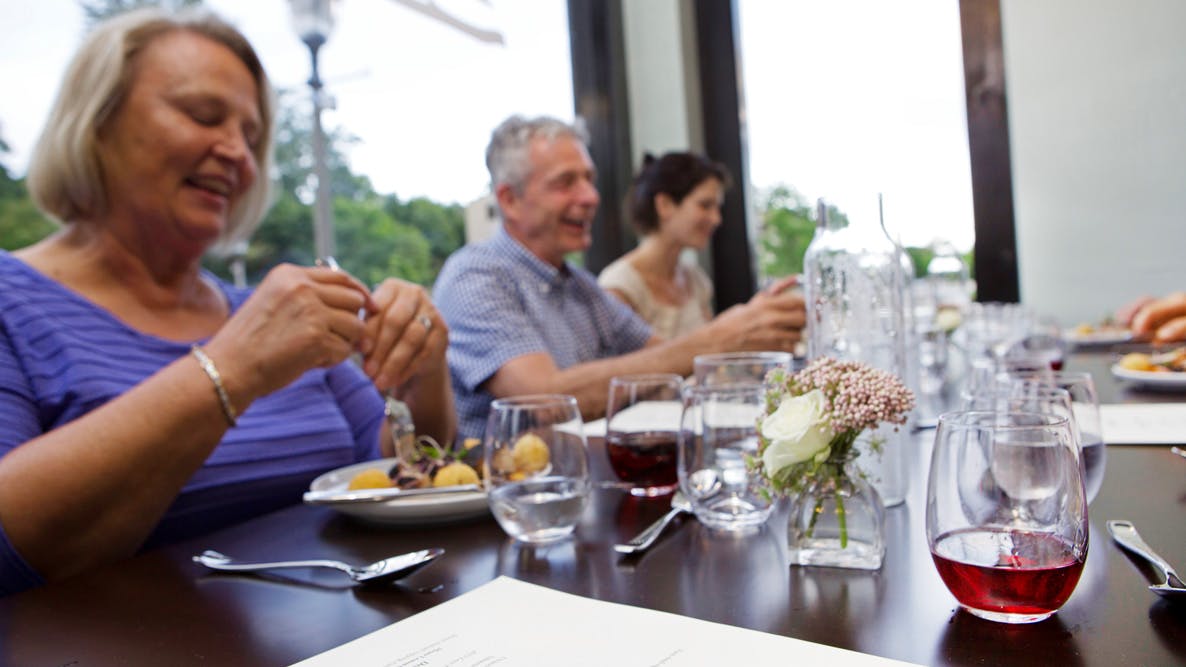User-centered design is on the menu
Launching a restaurant is the ultimate personal exercise in user-centered design.
User-centered design is on the menu
What does it take to run a restaurant?
Before we opened our own place six months ago, that’s a question that my husband Richard and I asked a lot of people.
It was a dream of ours, but we knew that we had no experience and that it’s a risky business. We soaked up everything we could get our hands on from industry gurus like Danny Meyer and David Chang. We went local, talking with restaurateurs, managers, chefs and bartenders.
Everyone we talked with was unfailingly generous with their time and advice, but they were also hesitant to give it. Why? Because they were afraid we would be insulted if their ideas didn’t match up with ours.
It is a delicate balance – taking advice but not losing your vision – but I think from this whole experience the biggest lesson I have learned is the value of being a sponge. Many things we heard were contradictory, but it helped us look at issues from multiple perspectives and reach informed decisions.
Once we opened, it became much more important to know our value proposition, to communicate our vision to our staff and guests, and keep those standards front and center. It makes it easier to say, “oh, well” when a troll says everything you do sucks on Yelp and to say, “we can do better” when the next person gushes that you’re perfect. It keeps us honest when we don’t live up to our brand promise of “creating a setting for the best night of your week.”
Our menu is a regularly evolving Minimum Viable Product (MVP). We change it seasonally and watch the numbers to see what sells and what doesn’t. Honestly, it doesn’t always make a lot of sense. Is there some hormone in the air that makes everyone want steak one week and salmon the next? But watching these trends lets us home in on our guests’ desires more accurately.
The surprises (both good and bad) are what keep the process interesting. It would be easy to let the data dictate that we only serve burgers and mac and cheese. That’s a recipe for boredom for both our guests and our team. Pushing those boundaries means putting an octopus special on the menu (and being pleasantly surprised when it sells out).
Basically, in opening our restaurant, we did what my colleagues at Design Concepts do when designing products and services. You conduct market research, talk with experts and users, develop concepts, test them out and keep iterating to create delight.
Our researchers, designers and engineers are passionate about the human-centered design of experiences whether they come in the form of a service or product. I admire their patience and dedication. One of the best things about owning a small restaurant is that we get immediate feedback every night. People celebrating anniversaries and birthdays. Couples holding hands. Big smiles. When I think of designers laboring for months to years on complicated medical devices, that ultimate payback of a happy user is often distant. They may never see the final product in use at all. That can’t be easy. But knowing you’re making a difference is a powerful motivator.
The more I think about it, most of us work for that feedback loop of making someone happy and feeling their appreciation. It doesn’t matter if they are a world away using something you helped design or shaking your hand at the host station. We are happiest when we make someone’s life better.
So, what does it take to run a restaurant, design something cool, change your little corner of the world (or someone else’s)?
Open your heart, eyes and mind, believe in what you’re doing, and let your users show you what success looks like.
May you have much happy designing and living in 2018.
